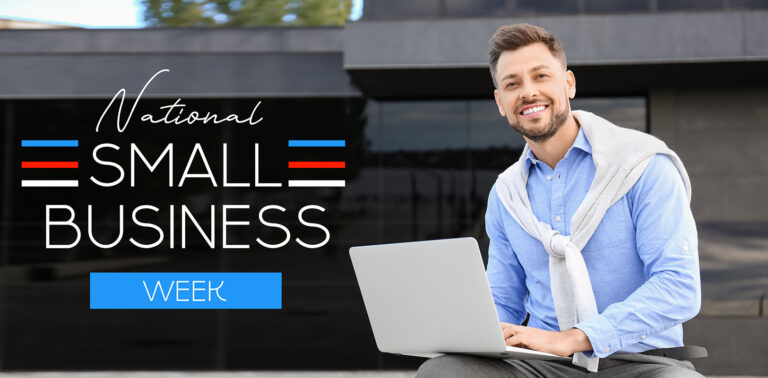March 27th, 2020
Paycheck Protection Program
Posted in: Business Law Featured Tagged: Andrew L. Schwartz, Coronavirus
Author: Andrew L. Schwartz
UPDATED: 4/3/2020: The SBA has issued interim final rules for the Paycheck Protection Program.
Based on the Paycheck Protection Program Fact Sheet for Borrowers issued by the SBA on 3/31/2020, some of the information in this 3/27/2020 article may have changed. Please see the Paycheck Protection Program Fact Sheet for Borrowers.
Today, March 27, 2020 the “Coronavirus Aid, Relief, and Economic Security Act” (the “CARES Act”) was signed into law by the President.
Certain eligible businesses will be able to apply for emergency loan programs available from the U.S. Small Business Administration (“SBA”). This Paycheck Protection Program will make available up to $349 billion in loans by banks and other lending institutions to small businesses and others. These loans are intended to cover the cost of maintaining payroll, insurance, rent, health benefits, utilities and other expenses.
Key provisions of the COVID-19 Paycheck Protection program are set forth below:
Eligible Entities:
- Small Business Concerns. Any business that already qualified as a “small business concern” under the existing Business Interruption Loan Program (including those that have more than 500 employees each, as permitted under the SBA’s Table of Small Business Size Standards).
- Any Business Concern, subject to Employee Maximums. All businesses, most nonprofit organizations, veterans organizations and Tribal business concerns that each employ (a) 500 employees or less (including any employee employed on a full-time, part-time or other basis) or (b) if higher than the maximum number specified for the type of business in the SBA’s Table of Small Business Size Standards.
- Hotels and Restaurants. Hotels, casino hotels, restaurants and other food service providers (a) that have no more than 500 employees per location will also qualify and (b) are exempted from the Affiliation Rules applicable to other businesses (see NAICS Section 72, “accommodations and food services”).
- Sole Proprietors, Independent Contractors and Self– Employed Individuals. Individuals who operate under sole proprietorships or as independent contractors, as well as individuals who qualify as “self-employed individuals” under Section 7002(b) of the Families First Coronavirus Response Act (based on eligibility to receive sick leave if similarly employed by an employer).
- Nonprofit Organizations. Organizations described in Section 501(c)(3) of the Internal Revenue Code (the Code) that are exempt from taxation under Section 501(a) will qualify, but the Affiliation Rules apply to such organizations.
- Veteran’s Organizations. Organizations described in Section 501(c)(19) of the Internal Revenue Code that are exempt from taxation under Section 501(a) of the Code, but the Affiliation Rules apply to such organizations.
- Tribal Business Concern. Small business concerns that are either (a) wholly owned by one or more Indian tribal governments or by a corporation wholly owned by one or more Indian tribal governments; or (b) owned in part by one or more Indian tribal governments, or a corporation that is wholly owned in part by one or more Indian tribal governments, as long as all other owners are U.S. citizens or small business concerns.
Borrower Requirements and Certifications:
A good-faith certification that:
- The loan is needed to continue operations during the COVID-19 emergency;
- Funds will be used to retain workers and maintain payroll or make mortgage, lease, and utility payments;
- The applicant does not have any other application pending under this program for the same purpose and amount; and
- From February 15, 2020 until December 31, 2020, the applicant has not received duplicative amounts under this program.
During the covered period, the requirement that a small business concern is unable to obtain credit elsewhere shall not apply to covered loans.
Maximum loan amount (capped at $10 million):
The maximum loan amount of the Paycheck Protection Program for each borrow will equal the lesser of:
- $10 million; or
- The average total monthly payments by the applicant for payroll costs incurred during the one-year period prior to the date on which the loan is made multiple by 2.5*; plus the outstanding amounts of any Emergency Injury Disaster Loan (“EIDL”) obtained on or after January 31, 2020 which is to be refinanced under this loan.
*Special rules exist for season employers and businesses not in existence beginning February 15, 2019 and ending on June 30, 2019.
Interest Rate: The interest rate on loans under this Paycheck Protection Loan program is not to exceed 4% and interest payments are deferred for at least six months and not more than one year.
Maturity: The principal amount of a COVID-19 Paycheck Protection Loan that is not forgiven in accordance with the CARES Act will continue as a loan guaranteed by the SBA with a maturity to be agreed with the applicable lender, not to exceed 10 years.
Use of Payroll Protection Proceeds:
Businesses may, in addition to uses already allowed under the SBA’s Business Loan Program, use the loans for:
- Payroll costs:
- Includes: salary, wage, commission, or similar compensation; payment of cash tip or equivalent; payment for vacation, parental, family, medical or sick leave; compensation for dismissal or separation; payment required for the provision of group health care benefits, including insurance premiums; payment of retirement benefits; or payment of state or local tax assesses on the compensation of employees; and compensation to sole proprietors or independent contractors (including commission-based compensation) up to $100,000 in 1 year, prorated for the covered period;
- Excludes: individual employee compensation above $100,000 per year, prorated for the covered period; taxes imposed or withheld under FICA (Social Security and Medicare), Railroad Retirement Act, and IRC Chapter 24; compensation to employees whose principal place of residence is outside of the U.S.; and qualified sick leave or family leave wages for which a credit is allowed under the Families First Coronavirus Response Act.
- Eligible recipient can use the proceeds from the loan for:
- Payroll costs;
- Costs related to the continuation of group health care benefits during periods of paid sick, medical, or family leave, and insurance premiums;
- Employee salaries, commission, or similar compensations;
- Payments of interest on any mortgage obligation (excludes prepayment);
- Rent (including rent under a lease agreement);
- Utilities;
- Interest on any other debt obligation that were incurred before the period.
Loan Payment Deferral:
The CARES Act requires all lenders to provide complete payment deferment for all principal, interest and fees with respect to Paycheck Protection Program Loans for a period of at least six months and not more than one year.
Other COVID-19 Emergency Loans:
If an applicant obtained an Economic Injury Disaster Loan (“EIDL”) Loan between Jan. 31, 2020, and the date a COVID-19 Paycheck Protection Program Loan is made available to it, but the EIDL is for a purpose other than paying payroll costs, mortgage interest, rent, utilities, etc. , the CARES Act does not prohibit the borrower from obtaining both loans. An EIDL made on or after January 31, 2020, may be refinanced as part of a covered loan under the Paycheck Protection Program. For EIDLs during the covered period, the SBA will approve and offer loans based solely on the applicant’s credit score. In addition, the CARES Act establishes an Emergency Grant to allow eligible entities that apply for an EIDL to request an advance of the loan of not more than $10,000, which does not have to be repaid even if the application for the EIDL is ultimately denied. The applicant must submit a certification for the advance and, if approved, it is distributed within 3 days.
Loan Forgiveness:
- Amount of Forgiveness. Pursuant to Section 1106 of the CARES Act, a borrower will be eligible for loan forgiveness equal to the amount spent by the borrower during an 8-week period after the origination date of the loan on payroll costs, interest payment on any mortgage incurred prior to February 15, 2020, payment of rent on any lease in force prior to February 15, 2020, and payment on any utility for which service began before February 15, 2020.
- Forgiveness Reductions. The amount of a COVID-19 Paycheck Protection Loan to be forgiven will be reduced as follows.
- Any reduction in the average number of full-time equivalent employees employed by the borrower during the eight-week measurement period beginning upon origination of the loan, as compared to one of the following (at the borrower’s election):
- the average number of full-time equivalent employees per month employed between Feb. 15, 2019, and June 30, 2019, or
- the average number of full-time equivalent employees per month employed between Jan. 1, 2020, and Feb. 29, 2020.
- Compensation reductions per employee of more than 25% versus compensation during the most recent full quarter for which the employee was employed before the eight-week measurement period, subject to the following exceptions and adjustments:
- Employees who received compensation of more than $100,000 per annum during 2019 are excluded from this calculation.
- Additional forgiveness is provided for additional wages to tipped workers and allowances are available for seasonal employers.
- Any reduction in the average number of full-time equivalent employees employed by the borrower during the eight-week measurement period beginning upon origination of the loan, as compared to one of the following (at the borrower’s election):
- The loan forgiveness calculation is made without regard for reductions in full-time equivalent employees or individual employee compensation between Feb. 15, 2020 (as compared to the number of full-time employees and full-time employee compensation as of Feb. 15, 2020), and 30 days after the date of enactment of the CARES Act, so long as such position elimination or compensation reduction is reversed by June 30, 2020. In other words, to encourage employers to rehire any employees who have already been laid off due to the COVID-19 crisis, borrowers that re-hire workers previously laid off will not be penalized for having a reduced payroll at the beginning of the period.
- Not Taxable Income for Federal Income Tax Purposes. The portions of COVID-19 Paycheck Protection Loans that are forgiven in accordance with the CARES Act are excluded from gross income for federal taxation purposes of each applicable borrower.
- No Guarantee: Between February 15, 2020 and ending on June 30, 2020, no personal guarantee is required for the covered loan AND no collateral is required for the covered loan.
- No prepayment penalty.
- Nonrecourse: The administration has no recourse against any individual, shareholder, member, or partner of an eligible loan recipient for non-payment, UNLESS loan proceeds are used for unauthorized purposes.
- No Fees: Between February 15, 2020 and ending on June 30, 2020, with respect to covered loan, the Borrower and Lender Fees usually payable under an SBA Loan are now waived.
You can find more on issues affecting businesses and individuals in our COVID-19 Resource Center.







